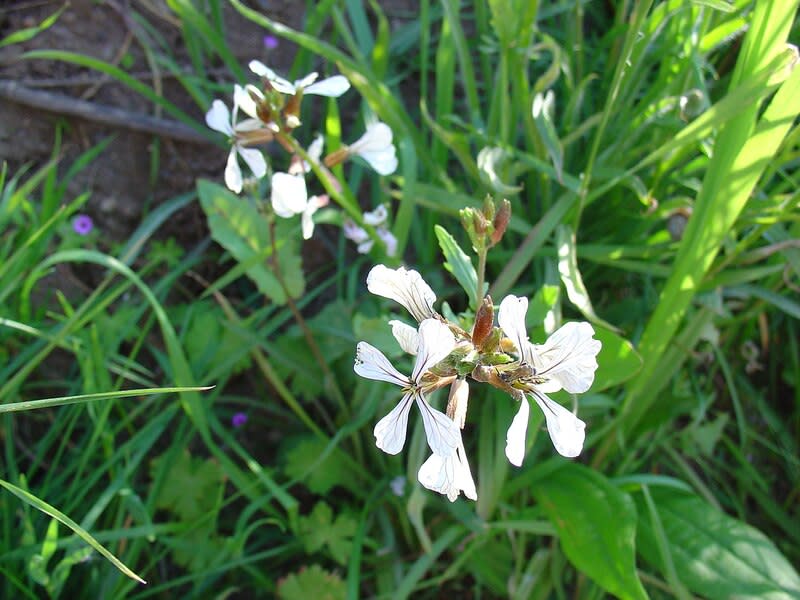
🌿 Morphology
🌞 Growing conditions
🌍 Origin and family
🌾 Uses
Warning: Despite the care taken in writing this sheet, it is essential to cross-reference sources before using or consuming any plant. When in doubt, consult a qualified professional
Permaculture uses
Arugula is primarily used as a salad green, adding a peppery flavor to dishes. The flowers and seeds are also edible. It acts as a quick-growing cover crop and green manure. Arugula attracts beneficial insects like hoverflies and ladybugs. Some cultivars offer varying levels of pungency or leaf shape.
Permapeople description
Rocket, also known as Eruca vesicaria sativa, is a plant native to the Mediterranean region. It is a small, annual plant that typically grows to be about 20-30 cm tall. It has long, narrow leaves that are a pale green color, and small white or yellow flowers. The plant grows quickly and can be differentiated from similar plants by its unique leaf shape. Leaves can be harvested after 3-6 weeks.
Rocket prefers to grow in well-drained soil in full sun or partial shade. It likes to grow along tracks, on waste grounds or stony places. To cultivate it successfully, a grower will need to ensure that the soil is moist but not waterlogged, and will also need to protect the plant from extreme temperatures, especially frost. Rocket is not particularly winter hardy, so it may need to be grown in a greenhouse or indoors in colder climates.
Rocket is edible, and both the leaves and the seeds can be eaten. The leaves have a spicy, peppery flavor and can be used in salads or cooked dishes. The seeds ripen from July to September and can be roasted and used as a flavoring for dishes or as a garnish. After harvest, the leaves can be stored in the refrigerator for a few days, while the seeds can be stored in an airtight container in a cool, dry place for several months.
Rocket has several uses beyond its edible parts. It has been used medicinally as a digestive aid and to treat respiratory problems. Rocket is also valuable for wildlife, as it provides food and shelter for a variety of species. Its flowers attract pollinators such as bees and butterflies, and its seeds are a source of food for birds
Botanical description
Eruca vesicaria sativa, commonly known as arugula, is an annual plant of the Brassicaceae family. It typically grows to a height of 20-100 cm. The leaves are pinnately lobed with a characteristic peppery flavor. The flowers are white with purple veins, arranged in racemes. The fruit is a silique containing numerous seeds. It thrives in full sun to partial shade and well-drained soil. This plant is self-seeding.
Companion planting
Arugula is a good companion plant for carrots, radishes, and rosemary. Avoid planting near fennel or strawberries as they can inhibit growth. It can act as a trap crop for certain pests, diverting them from more valuable plants.
Propagation methods
Arugula is easily propagated by sowing seeds directly into the ground in spring or fall. It can also be started indoors and transplanted. Seeds germinate quickly and the plant readily self-seeds. Cuttings are not typically used.
History and traditions
Arugula has been cultivated since Roman times and was prized for its culinary and medicinal properties. It was used as an aphrodisiac and digestive aid. In some cultures, it was believed to have protective powers against evil spirits. Its consumption has varied historically, sometimes being considered a delicacy and other times a common weed.
Usage calendar
Sowing: Spring, Fall. Harvesting: Spring, Summer, Fall (leaves can be harvested continuously). Flowering: Spring, Summer. Self-seeding occurs primarily in late summer and fall.
